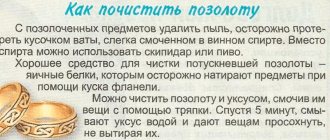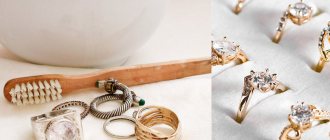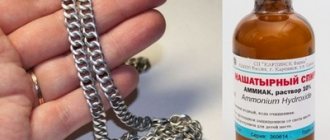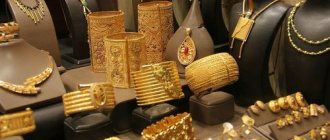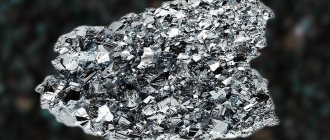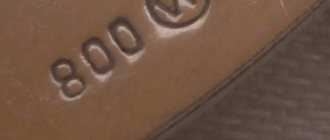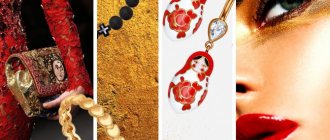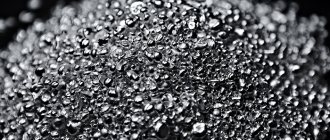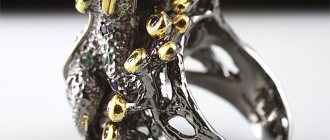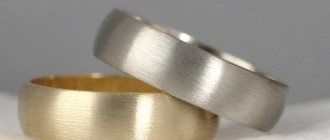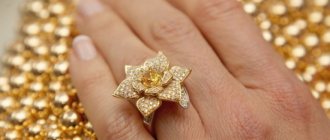Silver has been known to mankind for many centuries. Many cultures revere this metal and recognize it as a symbol of spiritual purity due to its amazingly noble radiance. Due to its bactericidal properties, the metal was actively used to disinfect water during epidemics and bloody wars. The use of silver in medicine is described in a number of ancient manuscripts by various healers and healers.
In its pure form, silver cannot be used to make dishes and kitchen utensils, jewelry and all kinds of awards and banknotes (coins).
This is a very soft metal. Even when producing very thin plates and winding products for the electronics industry, it must be alloyed.
To sufficiently increase the hardness of the silver alloy and ensure resistance to abrasion and mechanical stress, other metals are introduced into it: cadmium, copper, nickel and a number of other metals. This technological process is called alloying.
Precious metals
Nowadays, products made from a wide variety of materials, from ceramics to amber, are available for public sale and at budget prices. Gold is a noble metal, from which various accessories have long been produced. Only this metal is not at all the absolute leader in the jewelry industry. In every store you can find gold earrings, platinum cufflinks, bronze brooches, and silver bracelets.
Silver is especially valued for its low cost, but few people know that it comes not only in steel color, but also in yellow, white, gold and even pink. And while most of these colors are achieved through sputtering, the yellow-golden color of silver is achieved through oxidation. This means that such a product will not lose its presentation for a long time.
Oxidation
Silver turns yellow slowly, but this process still occurs. Jewelers, of course, are aware of this problem, and in order to somehow delay the appearance of yellowness, they came up with the idea of covering silver items with a thin film of rhodium.
This metal is rare and therefore very expensive. The price per troy ounce (31.1 grams) is over $10,000. Previously, rhodium was added to platinum, but later they decided to do rhodium plating on silver.
Rhodium is a metal that, due to its properties, protects silver from entering into a chemical reaction with environmental components. But the rhodium plating wears off over the years. And the jewelry gradually develops first a yellow, then a gray, and finally a black coating.
If it is difficult to remove blackness on your own at home, then anyone can cope with yellowness. You just need to follow our instructions carefully.
Story
Until the middle of the second millennium AD in Egypt, silver was valued much more than gold, because in terms of the number of nuggets mined, gold was much more common. Only later, when the ratio of precious metals throughout the world became known, silver was inferior in value to gold.
From the mid-thirteenth century in Europe, silver began to be used to make dishes and cutlery, coins, and jewelry for men and women. Since this metal has antiseptic properties, it was often used by alchemists for their work, and jewelers also created amulets and amulets from silver for children and women.
On the territory of Rus' at that time there were no sources of its own where silver could be mined, so there was an active trade in precious metals. In particular, this happened in Nizhny Novgorod, as one of the most important shopping centers receiving merchants from all over Europe.
During the Middle Ages there was a sharp rise in all areas, including technology, culture, and science. Therefore, new ways of processing metals, mining them, creating jewelry and devices appeared. Silver was valued for its flexibility in processing, its softness and ease of creating shapes. In addition, even at home, silver can be cleaned with improvised means, so it quickly gained popularity for creating products such as home decoration, tools, dishes and cutlery.
Chemistry
Silver is stable in water, practically does not react with oxygen in the air at room temperature, but due to the presence of hydrogen sulfide in the air, over time it becomes covered with a thin dark coating of silver sulfide. Silver also reacts with ozone, forming a coating of silver oxide. This is the very darkening that is considered the main drawback of this metal.
Copper, which is the most common alloy for silver alloys, also forms a coating of copper sulfide. The higher the copper content in the alloy, the faster the product will darken, and the lower, the less susceptible the alloy is to tarnishing, so alloys from 875 to 960 are considered the most stable.
Ligature is an alloy of two or more components that is added to a precious metal to bring the jewelry alloy to a certain standard, change the color of the alloy, and also impart various useful properties. The process of adding a ligature is called doping.
Silver dissolves in nitric and hot concentrated sulfuric acid. Like gold, it reacts with alkaline solutions of cyanide. You will probably never encounter these things. And if you do, be very careful.
A budget option
Indeed, silver costs much less than its gold counterpart. The point is not only that there is several times less gold, but also that silver easily loses its beautiful appearance with frequent contact with the skin: blackness appears, which must be cleaned until it shines.
But even despite this, silver products are a good choice for those who want to get beautiful or designer jewelry at a low cost. And the exclusivity of silver can be a pleasant bonus to your purchase. This is exactly the metal that can be perfectly disguised as gold and at the same time it will maintain a low cost.
Using 925 sterling silver
925 sterling silver alloy is widely used for making jewelry and is considered one of the favorites among jewelers. Products made from 925 sterling silver are durable, do not deform when worn, and look good.
The tensile and plastic properties of one gram of 925 silver alloy are such that a thin wire several hundred meters long can be drawn from it. The unique malleable properties of this alloy make it possible to make various thin, weightless jewelry from it: rings, earrings and bracelets . Silver wire is used by jewelers as a material to create openwork filigree.
The photo below shows silver wire made from 925 sterling silver alloy.
Jewelry with fine filigree work is created from 925 silver alloy . Filigree is a very ancient type of jewelry art that has survived to this day. When decorating jewelry with filigree, a method of twisting silver or gold wire is used. To do this, two wires of precious metals are twisted together into one openwork thread. Then this thread is spread onto the surface of the jewelry and soldered. The work of creating filigree is very hard work, since the master jeweler has to process a large surface of the product with openwork thread made of precious metal. After the painstaking work of the master, the result is a beautiful openwork filigree. And in order for the filigree product to have an even more aesthetic appearance, the filigree is decorated with miniature balls or small grains smelted from silver and gold. Depending on the imagination of the master, filigree can be of various shapes: thick, thin, smooth or embossed. Filigree looks especially beautiful when it is combined with precious stones, decorated with crystal, mother-of-pearl or enamel.
Today, silver wire with the required diameter is obtained by heating a silver strand in order to give it the necessary softness. The silver rope is then pulled through several gradually tapering holes. This is how you get the wire of the desired section. Once the silver wire is ready, the jeweler begins to create a masterpiece of filigree jewelry.
The photo below shows a silver brooch made of high-grade 925 alloy. This silver jewelry has a rhodium plated finish and is made using the filigree technique. This filigree technique involved laying and soldering openwork silver wire and small silver balls onto a metal background.
Photo of an original filigree pendant - amulet, made of 925 sterling alloy. The presented jewelry has a protective rhodium coating. This piece has a green precious stone, peridot, embedded in it.
The interweaving of the finest silver threads in filigree work can have a strong resemblance to thin frost on windows. Depending on the imagination of the master, filigree products can have various designs, figures, patterns and ornaments.
Below in the photo you can see a silver fork made of 925 sterling silver alloy. The fork has a beautiful, elegant design with fancy shapes. This cutlery was made in the USA in the 1940s and is in excellent condition. The surface of the product shows almost noticeable signs of wear, in the form of small abrasions and scratches. This indicates that the owner of this fork treated this item with care. The fork is marked with the inscription “sterling”, which means that this product is made of high-grade 925 sterling silver.
Silverware in the home has always been associated with prosperity and wealth. Today, silverware is considered a collector's item. Even a small silver spoon made of 925 sterling alloy, if it is in the house, creates a pleasant impression of its owner. Pictured below is a small set of silver spoons and forks made from 925 sterling silver alloy.
Golden color
In retail stores you can often find silver jewelry with gold plating, which only slightly increases the cost of the product, but does not give it durability.
Few people know about the existence of yellow silver without sputtering. This characteristic color is obtained due to the addition of copper, which, by the way, additionally protects this precious metal from oxidation. In school chemistry lessons, an experiment is often carried out: a yellow precipitate of salt is isolated from silver nitrate. Jewelry made from this precious metal is given a golden color by adding other elements, such as copper. For example, zinc or silicon.
How quickly does gold plating wear off?
Visually, gold-plated silver is no different from gold. But the first one is not suitable for daily wear. When gilding, the metal binds to the surface being treated at the molecular level, so the only impact under which it can be erased is mechanical. Some people think that contact with water will cause the gold plating to come off, but this is not the case. Gold-plated jewelry, along with gold jewelry, is highly susceptible to scratches.
Thus, the service life of gilding also depends on how carefully you store and wear the product. In addition, the thickness of the gold plating, unfortunately, can also be different and range from 0.05–0.5 microns.
How long the coating will remain on your jewelry depends on how you wear it. If you buy a product in a specialized store and have all the quality certificates, then you can enjoy such a product for at least two years. At the same time, on pendants and earrings - jewelry that does not come into contact with the skin so often, the coating will last much longer.
If the gold plating is worn off, it can be easily restored. But if you want the product to become silver, then you will need to know how to remove the gold plating.
Production technology
Old and antique silver items will naturally take on a golden hue over time, but you can also purchase new jewelry made from yellow silver. They are produced by adding various cheap metals. Fine silver comes in .999, 960 and 925 sterling and is very light in color and easily turns black over time. 875 still retains a light color, but lower grades such as 830 and 800 appear a little yellowish. Low-grade silver quickly acquires a golden hue over time. Silver below 800 fineness appears yellow.
There is silver and a red tint, but it is difficult to call it silver. This is a precious metal of 500 purity and below, which is what it becomes due to the content of too much copper. Silver is sometimes plated with rhodium, a noble platinum group metal. True, rhodium is quickly erased from the surface, which is why products made from such an alloy still acquire a black color.
Physics
Silver is a white precious metal. Its density is 10.5 g/cm³, temperature 960.5°C, boiling point 2210°C, Brinell hardness in the annealed state (after annealing) 25 kgf/mm². These numbers mean little to a non-specialist, but they are very important for those involved in processing the material. Depending on these indicators, different forces and methods are applied to the metal to give the finished products the desired properties.
Annealing is a high-temperature treatment to give the metal a more stable state, eliminate inhomogeneities, and relieve stress due to deformation. Silver alloys are annealed at a temperature of 600–650°C for up to ten minutes, depending on the mass, and with rapid cooling. Almost all silver jewelry is annealed.
Silver polishes well, is highly reflective, has good malleability and the highest thermal and electrical conductivity of all metals.
What types of gold-colored silver products are there?
“Golden” silver is often used to create jewelry. It can be used both with other precious metals and on its own:
- Indian necklace;
- yellow silver bracelet;
- designer set of jewelry with gilded silver inserts;
- rings with copper inserts;
- the core of the flower is made using gilding;
- adding copper to a silver alloy gives unusual shades;
- ring in a combination of different metals;
- the jewelry is made of silver with the addition of other metals to change the color.
The use of materials of different colors is often used in the jewelry industry
As you can see from the photographs, products made from yellow silver salts come out to be very diverse in beauty and quality of workmanship. You can choose jewelry made from this alloy for both everyday wear and a formal evening.
How to store 925 silver?
Humidity is one of the worst culprits in tarnishing silver. Store your jewelry in a jewelry box or other locked place and add special sachets of humectant agents to these areas. They absorb moisture and protect your jewelry.
If you don't wear your jewelry or store it for a long time, there are other ways to prevent it from tarnishing. Store them in jewelry cloth or ziplock bags to keep them out of direct sunlight.
One of the most harmful chemicals to sterling silver is chlorine or bleach. Never wear silver rings or jewelry while swimming in a pool or cleaning with bleach.
Salt is another important risk factor for silver corrosion. Swimming in sea water is contraindicated for silver!
Perfume and hairspray can damage your favorite jewelry. If you're getting ready for a party, it's best to apply perfume and hairspray first. Wait for it to dry before putting on your jewelry.
What styles are suitable for interiors using gold and silver?
The golden interior is best suited for classic, modern, and ethnic styles. Silver (especially a cool shade) is ideal for modern, laconic styles: hi-tech, minimalism, Scandinavian and others. However, a separate decor made in these shades will decorate almost any interior. For example, figurines, frames, dishes with a shabby surface, made in an antique style, will look great in Provence, shabby chic, and country.
If you are looking for decor in golden or silver shades, check out the catalog of the Lavender Decor online store! We present dozens of suitable items that can become bright accents in the interior of your home. You can order decor for the living room, bedroom, kitchen, bathroom with delivery throughout Russia. Add items to your cart, place an order - and the very next day we will send it to your city!
Go to the GOLD DECOR section
